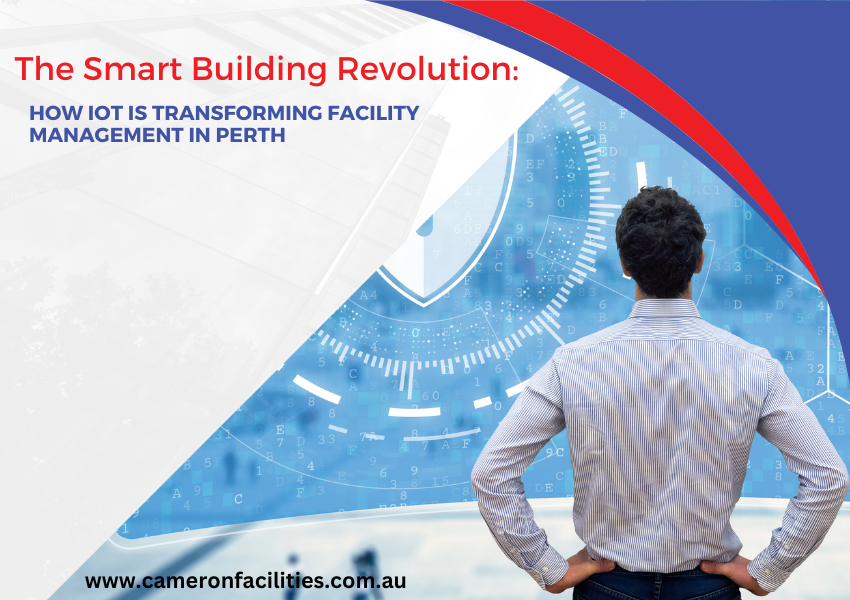
The facility management landscape across Perth is experiencing a technological revolution that’s reshaping how we think about building operations, energy efficiency, and occupant experience. As Western Australia continues to position itself as a leader in innovation and sustainability, the Internet of Things (IoT) is emerging as the backbone of modern facility management, delivering unprecedented insights and operational efficiencies.
What Are Smart Buildings and Why Do They Matter?
Smart buildings leverage interconnected sensors, devices, and systems to collect real-time data about everything from occupancy patterns and energy consumption to air quality and equipment performance. This network of intelligent devices creates a living, breathing ecosystem that responds dynamically to the needs of occupants while optimising operational efficiency.
For Perth businesses, this technology represents more than just a competitive advantage—it’s becoming an operational necessity. With energy costs continuing to rise and sustainability regulations becoming increasingly stringent, smart building technology offers a pathway to significant cost savings and environmental compliance.
The Perth Advantage: Why Our City is Perfectly Positioned for Smart Buildings
Perth’s unique characteristics make it an ideal testing ground for smart building innovations:
Climate Considerations: Our hot, dry summers and mild winters create specific HVAC challenges that smart building systems can address through predictive climate control and energy optimisation.
Mining Industry Integration: Western Australia’s mining sector demands sophisticated facility management solutions, particularly for remote operations where efficiency and predictive maintenance are critical.
Sustainable Development Goals: Perth’s commitment to becoming carbon neutral by 2030 aligns perfectly with smart building capabilities for energy reduction and emissions monitoring.
Growing Commercial Sector: With Perth’s CBD experiencing renewed growth and development, new buildings are increasingly incorporating smart technologies from the ground up.
IoT Applications Revolutionising Perth Facilities
1. Occupancy Monitoring and Space Optimisation
Modern occupancy sensors provide granular data about space utilisation patterns, enabling facility managers to:
- Optimise HVAC operations based on actual occupancy rather than schedules
- Identify underutilised areas for potential space reconfiguration
- Support hot-desking policies in hybrid work environments
- Reduce energy waste in unoccupied zones
Recent studies indicate that businesses implementing smart occupancy systems can reduce energy consumption by up to 30% while improving occupant comfort.
2. Predictive Maintenance Through Equipment Monitoring
IoT sensors attached to critical building systems—HVAC units, lifts, pumps, and generators—continuously monitor performance metrics such as:
- Vibration patterns indicating potential mechanical issues
- Temperature fluctuations suggesting system inefficiencies
- Energy consumption anomalies pointing to maintenance needs
- Filter and component lifespan tracking
This predictive approach can reduce maintenance costs by 8-12% compared to traditional preventive maintenance and up to 40% compared to reactive maintenance strategies.
3. Energy Management and Sustainability
Smart meters and energy monitoring systems provide real-time visibility into consumption patterns across different building systems and zones. Perth facility managers are using this data to:
- Identify energy waste and implement targeted efficiency measures
- Track progress towards sustainability goals and carbon reduction targets
- Justify investments in renewable energy systems like solar installations
- Comply with Australian Government energy reporting requirements under the National Greenhouse and Energy Reporting Act
4. Indoor Environmental Quality Monitoring
Air quality sensors monitoring CO2 levels, humidity, temperature, and particulate matter enable automated adjustments to ventilation systems, ensuring optimal indoor environmental conditions while minimising energy consumption.
This capability has become particularly valuable post-COVID-19, with businesses prioritising occupant health and wellbeing through improved air filtration and circulation.
Real-World Impact: Perth Case Study Applications
While maintaining client confidentiality, we can share insights from Perth implementations across various sectors:
Commercial Office Buildings: A mid-size office complex in Perth’s CBD implemented comprehensive IoT monitoring, resulting in 25% reduction in energy costs and 90% decrease in equipment downtime through predictive maintenance.
Healthcare Facilities: Perth medical centres utilising smart building systems have achieved improved patient comfort through precise climate control while reducing operational costs by 20%.
Retail Centres: Shopping precincts using occupancy and environmental monitoring have optimised customer experiences during peak shopping periods while reducing energy waste during off-hours.
Industrial Facilities: Manufacturing and logistics facilities have leveraged IoT for equipment monitoring, achieving significant reductions in unplanned downtime and maintenance costs.
The Technology Stack: What Makes Smart Buildings Work
Sensors and Data Collection
- Temperature and humidity sensors
- Occupancy detectors using infrared and ultrasonic technology
- Air quality monitors measuring CO2, VOCs, and particulates
- Energy meters track consumption by system and zone
- Vibration and acoustic sensors for equipment monitoring
Connectivity and Communication
- Wireless networks (WiFi, Bluetooth, LoRaWAN) for sensor communication
- Edge computing devices for local data processing
- Cloud platforms for data storage and analysis
- Integration APIs connecting with existing building management systems
Analytics and Intelligence
- Machine learning algorithms for predictive maintenance
- Energy optimisation engines
- Automated reporting and alerting systems
- Dashboard interfaces for facility managers and occupants
Overcoming Implementation Challenges
Initial Investment Concerns
While the upfront costs of smart building systems can seem significant, the ROI typically materialises within 2-3 years through:
- Reduced energy consumption (20-30% savings common)
- Lower maintenance costs through predictive approaches
- Improved occupant productivity and satisfaction
- Extended equipment lifespan through optimised operations
Integration with Legacy Systems
Many Perth buildings feature existing building management systems that may seem incompatible with modern IoT solutions. However, strategic implementation approaches can bridge these gaps:
- Gradual rollouts starting with high-impact areas
- API integrations connecting old and new systems
- Hybrid approaches maintain existing controls while adding smart monitoring
Cybersecurity Considerations
As buildings become more connected, cybersecurity becomes paramount. Successful implementations incorporate:
- Network segmentation isolating building systems
- Regular security updates and monitoring
- Staff training on cybersecurity best practices
- Partnerships with Australian Cyber Security Centre certified providers
The Future of Smart Buildings in Perth
The trajectory for smart building adoption in Perth is accelerating, driven by several factors:
Regulatory Environment: Australian building codes are increasingly incorporating energy efficiency requirements that smart systems can help achieve.
Utility Incentives: Western Power and other utilities offer incentives for demand management and energy efficiency improvements.
Tenant Expectations: Modern tenants expect smart building amenities, including mobile app controls, automated systems, and sustainability reporting.
Technology Maturation: IoT devices are becoming more affordable, reliable, and easier to implement, reducing barriers to adoption.
Choosing the Right Smart Building Partner
Implementing smart building technology requires expertise across multiple domains—from sensor installation and network design to data analytics and system integration. When evaluating potential partners, Perth businesses should consider:
Local Experience: Understanding of Perth’s climate, building stock, and regulatory environment
Integration Capabilities: Ability to work with existing systems and provide unified management platforms
Ongoing Support: 24/7 monitoring and maintenance capabilities, ensuring continuous operation
Scalability: Solutions that can grow with your business needs and accommodate future technology advances
Data Security: Robust cybersecurity measures protecting sensitive operational data
Taking the First Step Towards Smart Building Implementation
For Perth businesses ready to embrace smart building technology, the journey typically begins with:
- Energy Audit and Assessment: Understanding current consumption patterns and identifying optimisation opportunities
- Pilot Implementation: Starting with high-impact areas like HVAC monitoring or occupancy tracking
- Gradual Expansion: Adding sensors and capabilities based on demonstrated ROI and operational benefits
- Staff Training: Ensuring facility teams can effectively utilise new capabilities and insights
- Performance Monitoring: Continuous evaluation of system performance and benefits realisation
The Smart Choice for Perth’s Future
Smart building technology represents more than just the latest trend, it’s a fundamental shift towards more efficient, sustainable, and responsive facility management. For Perth businesses, early adoption of IoT-enabled building systems provides competitive advantages through reduced operational costs, enhanced occupant experiences, and improved sustainability credentials.
As the facility management industry continues to evolve, organisations that embrace smart building technologies today will be better positioned to adapt to tomorrow’s challenges and opportunities. The question isn’t whether smart buildings will become the norm in Perth—it’s whether your business will be leading or following this transformation.
The smart building revolution is underway, and Perth is well-positioned to lead Australia in demonstrating how IoT technology can enhance facility management.
Ready to explore how smart building technology can transform your Perth facility? Contact our expert building management services team to discuss your specific requirements and learn how integrated facility management solutions can deliver measurable improvements to your operations.











